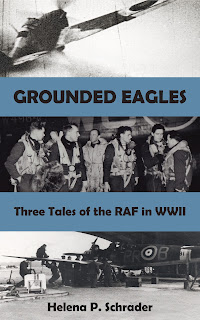The Real "Second Front" in WWII -- and its Effect on Post War History
From the moment he signed the Anglo-Soviet Agreement on 12 July 1941 until the
Western Allies landed in Normandy on June 6, 1944, Stalin harangued and harassed the West to open a "Second Front."
This
isn't surprising. Stalin had been caught flat-footed by the German
invasion in June
1941. The Germans came within 11 miles of Moscow before they were halted
in December of that year, and they advanced again -- deep into the
Soviet Union -- in 1942. From the first day of the war in the east
until Germany's
Unconditional Surrender in May 1945, the Soviets faced bitter and costly
fighting. There were many defeats, and even when battles ultimately ended in Soviet
victories such as at Stalingrad and ultimately Berlin they were costly in terms of men.
Although
the numbers remain highly suspect and controversial, there can be no
doubt that the Soviet Union suffered
horrendous casualties in the course of the war. These were officially
reckoned at around 8.6 million military and 7.4
million civilian casualties due to military action to which were added
4.5.
million famine deaths in territory occupied by the Germans for a rough
total of 20.5 million wartime casualties. (Comparative casualties for
Germany, the U.S. and the UK were: between 4.1 and 5.8 million Germans,
1 million Americans - including the Pacific theater - and 450 thousand
British.) While so many Soviet soldiers and civilians were dying, the Soviet leadership demanded that their Allies distract the Germans and take some of the pressure off their hard-pressed forces.
Yet no matter how understandable and legitimate the Soviet demands for a second front were, the Western leaders would have been guilty of treason to their own peoples had they undertaken a full-scale invasion before they had accumulated the personnel, shipping, weapons, munitions and air cover needed to give their armies a fighting chance of success. So until they were ready (as it turned out in June 1944), they tried to appease and placate Stalin with other forms of assistance.
First and foremost, this took the form of massive amounts of material aid. The British alone sent aid worth GBP 308 million, of which GBP 120 million was food aid, medical supplies and the like, and the rest was war materiel including 7,411 aircraft and 5,218 tanks. The U.S. extended "Lend-Lease" to the Soviet Union and after entering the war against Germany on 11 December 1941 sent USD 11.3 billion worth of goods (worth USD 180 billion in today's currency). This included 400,000 vehicles, 14,000 warplanes, 13,000 tanks, and 2.7 million tons of petroleum products.
Yet while these weapons helped the Soviets fight, they did not ease the pressure on the Red Army. The Soviets wanted something that would draw troops away from the "Eastern Front." Obviously, this was partially achieved by secondary fronts such as North Africa, but at the end of the day the resources diverted to these fronts were minimal and hardly noticeable in the bitter struggle waged between Hitler's Germany and the Soviet Union. For example, the Germans' deadliest anti-tank weapon was the Wehrmacht's 88mm guns; Rommel had only 35 of them when he entered the critical battle with the British 8th Army at El Alamein.
Yet while Rommel was starved of 88s, no less than 9,000 of Germany's tank-killing guns were deployed inside the Reich -- to fight the air offensive. In addition, 900,000 German troops were held back in the Reich to man the anti-aircraft defenses -- in addition to the old men and boys of the Volksstrum who assisted these soldiers. Note: 900,000 soldiers is more than Germany deployed in the Battle of Stalingrad. Likewise 70% of the Luftwaffe's fighter aircraft were stationed in the Reich and occupied Western Europe in an effort to bring down Allied bombers rather than supporting German land forces in their struggle against the Soviet Union. By April 1944, the Luftwaffe had just 500 fighters on the Easter Front to face some 13,000 Soviet aircraft.
In short, the Allied Air Offensive against Germany was the
"Second Front" in the sense that it effectively drew vital German
military resources away from the Eastern Front and tied them to the
defense of the Reich. Any assessment of the effectiveness of the Air War
must include this factor in addition to the damage done by strategic bombing.
My novels about the RAF in WWII are intended as tributes to the men in the air and on the ground that made a victory in Europe against fascism possible.
Riding the icy, moonlit sky,
they took the war to Hitler.
Their chances of survival were less than fifty percent.
Their average age was 21.
This is the story of just one bomber pilot, his crew and the woman he loved.
It is intended as a tribute to them all.
or Barnes and Noble.

"Where Eagles Never Flew" was the the winner of a Hemingway Award for 20th Century Wartime Fiction and a Maincrest Media Award for Military Fiction. Find out more at: https://crossseaspress.com/where-eagles-never-flew
For more information about all my aviation books visit: https://www.helenapschrader.com/aviation.html







Comments
Post a Comment